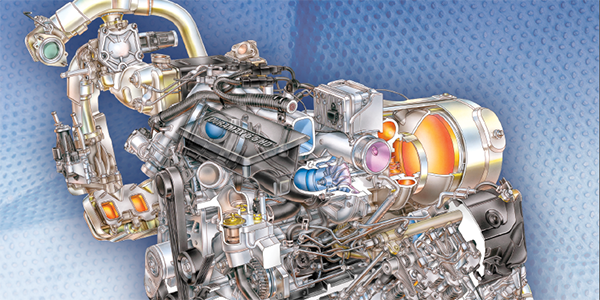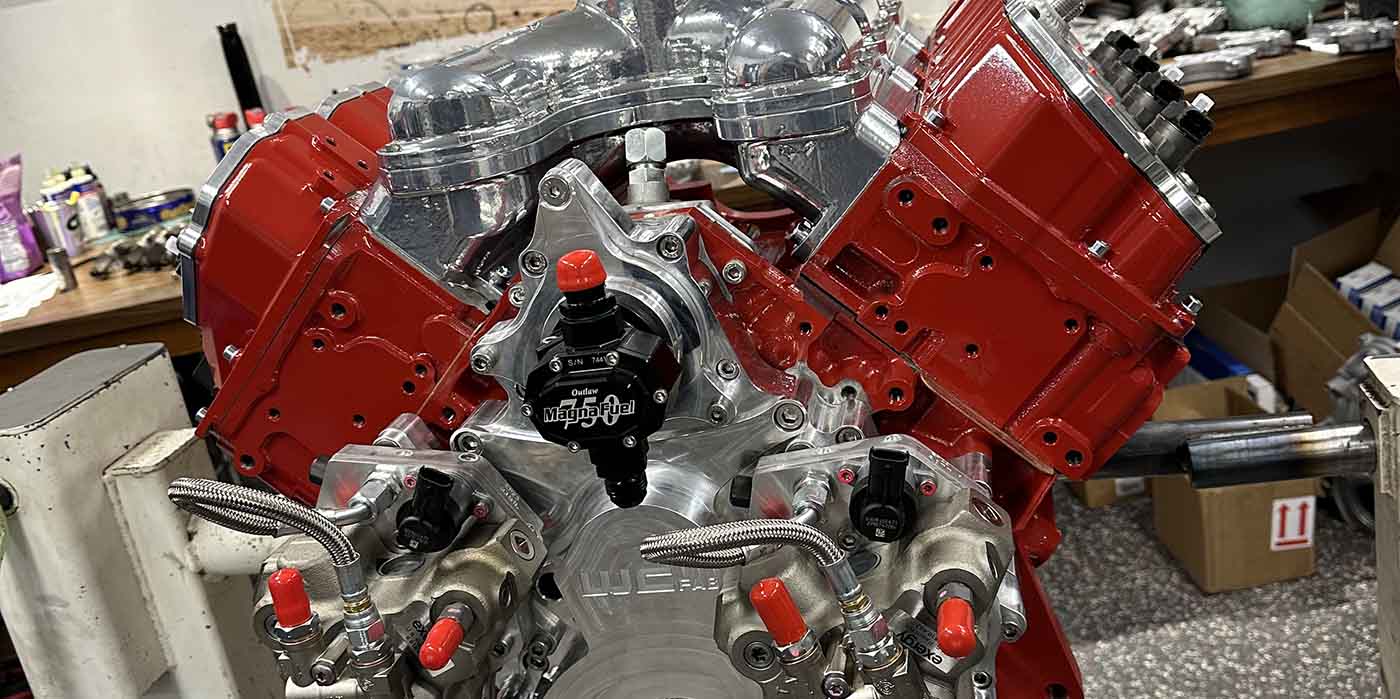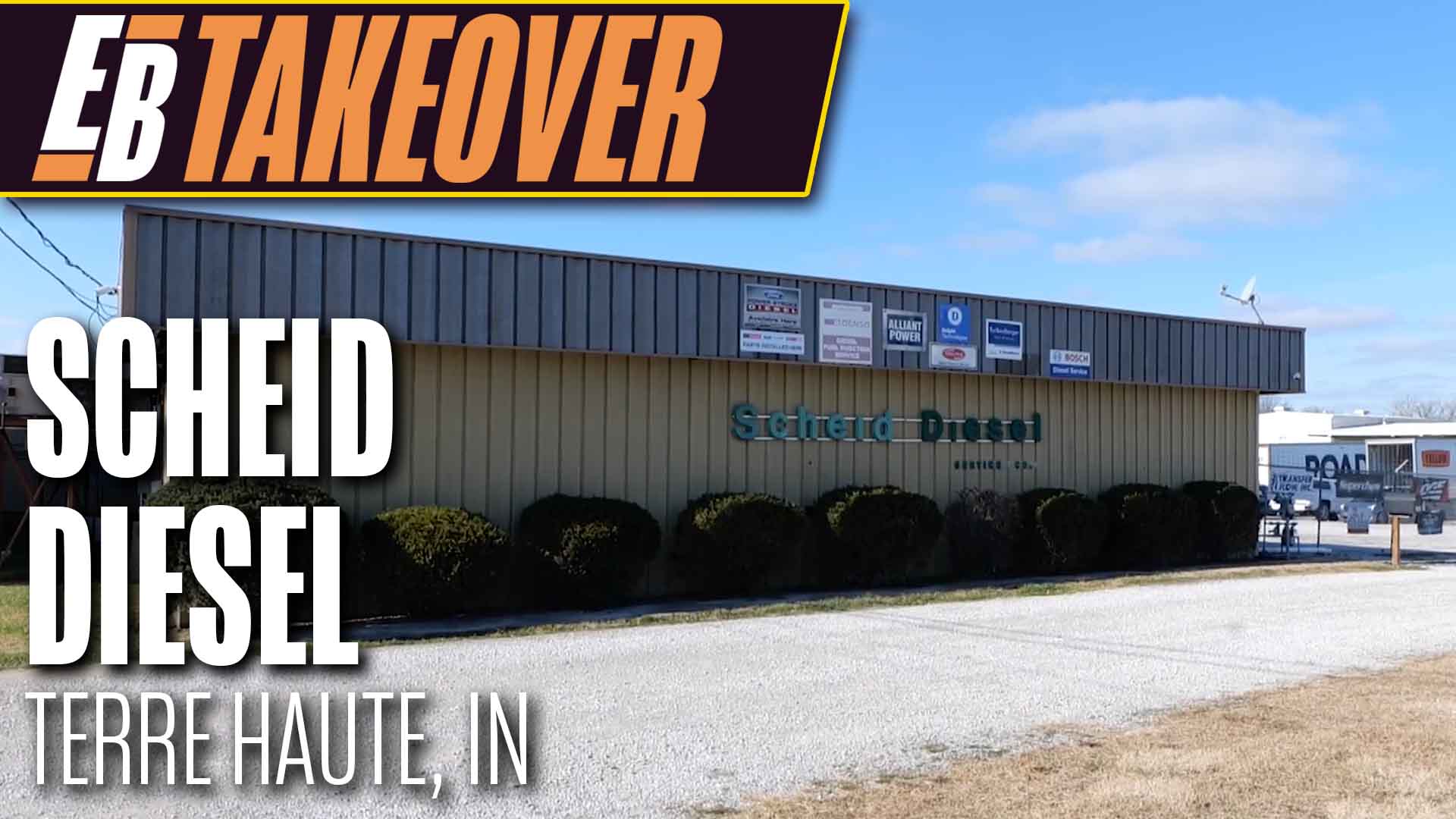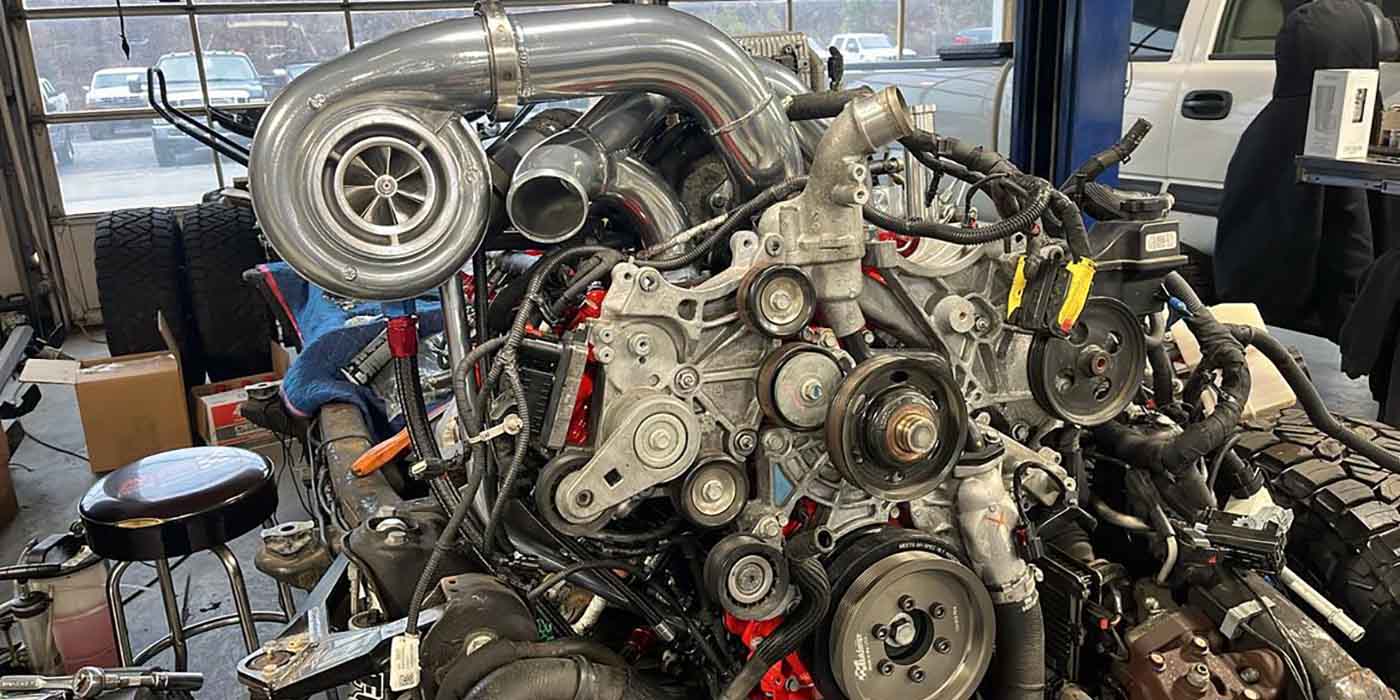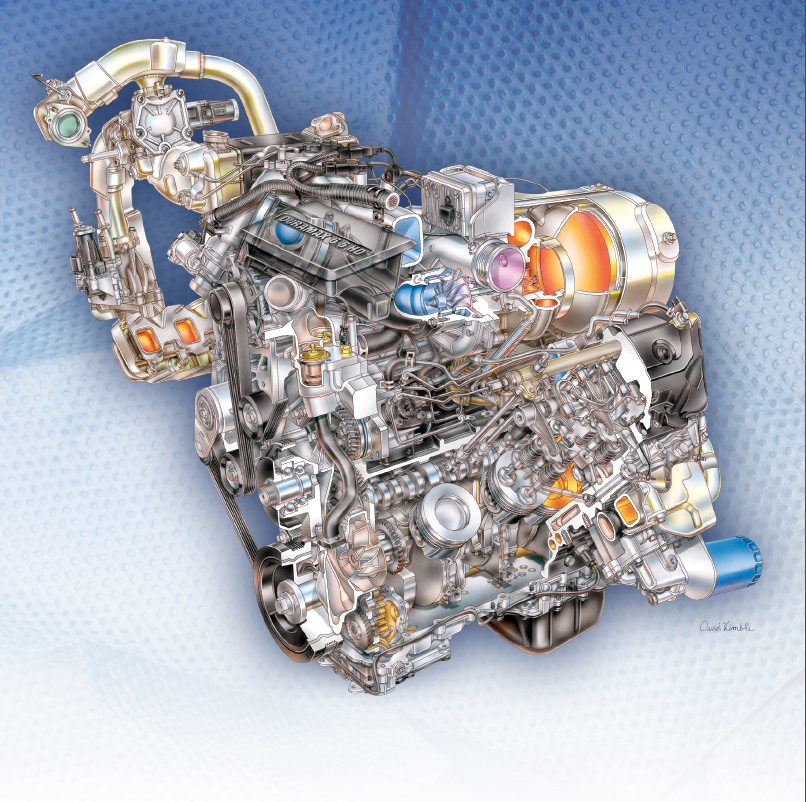
Despite what you see on the streets, work sites and drag strips of America today, General Motors’ diesel engine hasn’t always been treated with affection by its owners and with respect (even if somewhat reluctantly) by its competitors.
Today’s Duramax engines are recognized as dependable, powerful engines capable of being enhanced by internal engine modifications as well as bolt-on technology. They are used for towing and hauling, frequently over long distances and through unforgiving environments. They are asked to perform at the highest level and be ready to go at it again and again. Like other diesels, they are easily capable of traveling half a million miles – with proper attention and maintenance, of course.
But the 6.6L Duramax found in today’s Chevy Silverados, GMC Sierras, Chevy Express and GMC Savannas (as well as countless other trucks and even cars of a more vintage nature) is a long way from the diesel engines GM tried to bring to market originally.
According to Roy Berndt, engine expert and Engine Builder contributing editor, GM faced an uphill battle to competing in the diesel arena.
“In 1996, as General Motors was finalizing plans for its next generation of full-size trucks (code named GMT800), the company had only 3% market-share of the diesel-powered heavy-duty pick-up truck segment,” says Berndt. “This was really no surprise, since GM had single-handedly alienated the American buying public against the diesel engine beginning back in the late ’70s and early ’80s with the 5.7L V8 and 4.3L V6 diesel engines that were, let’s just say, ‘less than stellar.’ While there’s no point now in rehashing mistakes of the past, the 6.2L and 6.5L diesels had continued on in a similar tradition, even though the 6.5L was used in the HUMVEE for the military.”
The 6.2L and 6.5L diesel engines of the late ’80s were really no match for the Cummins 6BT diesel found in the Dodge Ram in 1989 nor the Ford/International Power Stroke available from Ford in 1999. Partnerships between the other vehicle manufacturers and their engine suppliers had effectively neutered GM’s diesel program and by 1999, GM didn’t even offer a diesel engine in any of its mid-size trucks.
However, behind the scenes, GM and Japanese engine maker Isuzu were working on a joint venture intended to produce a truly modern diesel engine. The collaboration created DMAX Ltd. “The name signified the diesel engine and maximum power, cleanliness and fuel economy,” says Berndt, “and the 13 hour time difference between Japan and the U.S. worked to their advantage.” Teams could videoconference late in the day for one team, early for the other, working on issues while the other team slept.
The new engine that resulted from this joint venture was a 6.6L, 90-degree, direct-injection, overhead valve, four-valve-per-cylinder, turbocharged diesel V8 with aluminum high swirl cylinder heads. An innovative electrically controlled common-rail fuel system provided maximum power for each pulse of fuel used and allowed full authority in injection timing and quantity. This combination along with pilot injection provided operating quietness and smoothness typical of similarly sized gasoline engines.
“When it came time to decide upon the marketing name for the new engine, GM was already handicapped by its poor diesel reputation,” Berndt explains. “The name itself was critical, as it would compete against Ford’s established ‘Power Stroke’ diesel engine. Dodge was using the Cummins engine and needed no other name, so after many meetings the engine was named Duramax Diesel 6600. Like the joint venture name, ‘Duramax’ was meant to highlight the durability and reliability of the new engine.”
In late 2000, the Duramax Diesel 6600 debuted in the new 2001 HD pickup trucks. Brought to market in only 37 months, it was the fastest new engine developed by GM Powertrain to date. The engine was an immediate success, making Ward’s “10 Best Engines” both in 2001 and 2002, and bringing up GM’s market share from 3 percent to 30 percent in the HD Diesel pick-up truck market.
The Duramax Evolution
Since its introduction, there have been multiple generations of the Duramax engine platform, all based on the original 6.6L design. They are all still relevant in the aftermarket.
LB7
The LB7 Duramax was first introduced for the 2001 model year in the Chevrolet Silverado HD, GMC Sierra HD, GMC TopKick (medium duty) and Chevrolet Kodiak (medium duty) trucks. That year also brought the Allison 1000, arguably the first automatic transmission in its class worthy of being mated to a powerful diesel. The LB7 was the pioneer of common rail technology, as Dodge would not introduce its own common rail Cummins until the 2003 model year – Ford wouldn’t add it to the Power Stroke until 2008.
The LB7 is a favorite engine, dramatically different from other Duramax models – it predates emissions regulations. As such, it’s praised for reliability and has been regarded as a particularly economical variation of the engine.
As impressive as GM’s new engine platform appeared, however, the LB7 had terrible problems with fuel injectors failing. In fact, injector failures were so frequent that GM was forced to recall the poorly designed units and replace them with an updated design. In order to provide loyal customers with a sense of reassurance, the factory warranty was extended to cover the new injectors for up to 200,000 miles.
“The integrity of the engine was great,” explains Engine Builder contributor and diesel expert Bob McDonald. “Its biggest problem was the fuel system, and particularly, injector failure. The engine used the Bosch common rail fuel system, which included the high-pressure fuel pump, high-pressure fuel rail, hard lines, injectors and electronic control module. For some reason, the Bosch injectors could not survive in the Duramax and would fail in three different ways – all related to the injector’s body becoming cracked.”
McDonald explains that one symptom of a cracked injector is excessive white smoke coming from the tailpipe, generally most noticeable at idle, especially while sitting in traffic. Fuel is entering the combustion chamber at the wrong time, causing the white smoke, showing an unburned fuel condition.
Fuel leaking into the combustion chamber, cannot be controlled by the engine’s ECU. Known as an injector’s balance rate this can be seen with a scan tool. The balance rates of an injector are adjustments of fuel to the injector made by the ECU, adjustments made from fluctuations of the crankshaft detected by the crankshaft position sensor.
The balance rates are given by the value being a plus or a minus to the volume of fuel per cylinder. If there is too much fuel for a particular cylinder, the balance rates for that cylinder would be a minus. The ECU then tries to take fuel away to correct the imbalance condition. White smoke indicates this minus balance rate caused by a cracked injector.
Another symptom of cracked injector failure is fuel dilution of the engine oil. This is due to an injector’s body being cracked externally, causing fuel to leak into the crankcase.
The injectors of the LB7 were located under the valve cover. The hard lines went from the high-pressure fuel rail and through the valve cover. If the injectors were leaking externally, fuel dilution could happen fairly quickly and go unnoticed because the engine would continue to operate fine.
There have been cases or injectors leaking externally so badly that the crankcase had filled with so much diesel that it began leaking from the rear main seal.
The last form of injector failure was a hot-engine, hard-start condition. When the engine was cold, the vehicle would start fine and drive normally without any noticeable problems – until the owner decided to stop somewhere on the trip.
When the owner would try to restart the vehicle, the engine would spin over but never fire.
This was caused by the injector’s body being cracked on the return side. The heat from the engine would literally cause the crack in the injector body to expand further, causing the fuel pressure that was entering the injector to be returned to the fuel tank.
The vehicle would have to sit for several hours and cool down before the engine would restart.
With so many injector failures between 2001 and 2004, GM extended the injectors’ warranty from five years/100,000 miles to seven years/200,000 miles. This did not, however, remedy the problem.
The biggest problem came when customers had their injectors replaced under the seven-year/200,000-mile warranty. Then several years later, after the truck was out of warranty, the injectors failed again, which, of course angered many customers because there was still a problem and now they were going to have to pay for it. And, if the other injectors didn’t last very long, this would be an ongoing problem for the owner.
With the injectors being under the valve cover, a lot of the components of the top of the engine have to be removed in order to access them so injector replacement in the LB7 Duramax is labor intensive.
It’s always advised that if there are several injectors causing problems that it’s better to replace them all because of the amount of labor that it takes to get to the injector.
The average cost of an injector replacement on the LB7 is generally around $4,000 to $5,000. The replacement process takes between 10 to 12 hours of labor and the injectors cost around $350 each. Bosch went through several designs before there seemed to be a cure.
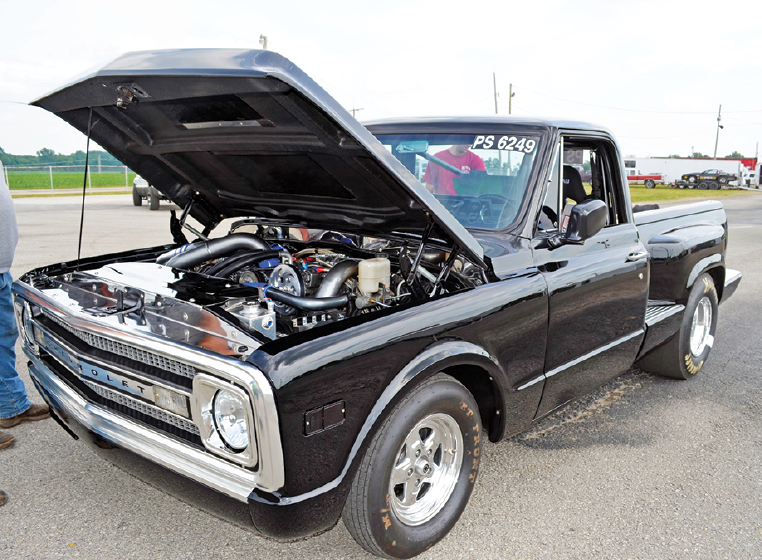
LLY
In the middle of 2004, GM released the second generation of the Duramax, with the RPO code of LLY, with the eighth digit of the VIN designated as number 2. The LLY was GM’s first attempt to implement emissions requirements on its diesel trucks. To meet this goal GM turned to a newly developed Garrett turbocharger with a variable geometry vane system and installed an Exhaust Gas Recirculation valve. Learning from problems with injectors in the previous LB7, GM changed the valve covers to not only remove them from the engine oiling system, but allow access to the injectors without having to remove the valve covers.
There were several reasons for the change: the injectors changed design and were now on the outside of the valve covers, providing easier access, and the EPA was tightening down on emissions standards for diesel engines in order to reduce NOx gas.
The LLY incorporated the use of an EGR (exhaust gas recirculation) valve. When engine conditions would reach a certain criteria determined by the ECU, the EGR valve would open to reintorduce exhaust gas be reintroduced into the intake manifold.
This often caused a buildup of soot in the intake system because the exhaust gas displacing the oxygen meant cooler combustion; the cooler combustion inside the cylinder formed soot.
In order to reintroduce exhaust gas into the intake of a diesel engine, the exhaust gas has to pass through what is known as an EGR cooler. A diesel engine exhaust temperatures can be much higher than gasoline, reaching as high as 1,200° F.
Before the exhaust gas reenters the intake at this temperature, it has to be cooled. The EGR cooler is more or less a small radiator that is a part of the engine’s cooling system, which as the hot exhaust gas passes through the cooler will cool the exhaust gas before reaching the intake manifold.
Over a period of time, the EGR coolers will fail, causing the engine coolant to enter the intake manifold. This will often result in loss of coolant with steam emitting from the tailpipe.
The LLY suffered from overheating. When Duramax incorporated the use of the EGR cooler, the cooling system of the engine was not upgraded.
When towing with the LLY up steep grades on a hot summer day, owners often noticed that the cooling system could not sustain the engine’s temperature and would overheat.
One of the other features of the LLY was the use of a VNT (variable nozzle turbo). The VNT allowed the turbocharger to change speed by altering exhaust pulses to the turbine wheel. This created better spool time and more boost for the engine off idle and would also change spool at the turbo when the engine was at cruising speed for the use of less boost. This more or less lets the turbo make boost when there is a demand.
The VNT was sometimes responsible for the overheating issues of the LLY because of the more restricted exhaust system. Some overheating issues did result, however, in head gasket failures, which could damage the entire engine.
Early on, problems came forward from customers complaining of severe overheating, and, in some situations, blown head gaskets. Although initially GM denied that it was a problem, after it was sued by a consumer group it relented and included overheating and blown head gaskets as a warranted item.
LBZ
The LBZ was relatively short-lived, available for only two model years for no other reason other than its replacement, the LMM, was introduced with the capability of meeting stricter emissions regulations coming over the horizon. Mechanically, the LBZ is nearly identical to the 2006 model year LLY but features more aggressive engine tuning, producing more horsepower and torque. The LBZ produced 360 horsepower and 650 lb.-ft. of torque to the LLY’s 310 horsepower and 605 lb.-ft.
The block was redesigned with more integrity along with the pistons and rods for the increase in horsepower to 360 and 650 ft.-lbs. of torque. The cooling system was upgraded with the use of a bigger radiator and fan along with a bigger EGR cooler. Under the LBZ, the Bosch fuel engine management system also changed. This time, the fuel system used a new 32-bit controller along with seven hole injectors.
The fuel pressures increased from 23,000 psi to 26,000 psi. Fuel sprayed directly onto the glow plugs for faster starts. The glow plugs were also independently controlled from the use of a controller for more efficiency during cold starts.
The 6.6L Duramax LBZ’s applications included the Chevrolet Silverado HD, GMC Sierra, HD, Chevrolet Kodiak, and GMC TopKick (the Kodiak and TopKick being medium duty truck models. In the aftermarket, the LBZ is thought of the “hot rod” for its huge performance potential, abundance of support, and the fact that it is the last model produced without a diesel particulate filter. Information released by General Motors at the introduction of the LBZ state that the engine has an increased piston pin diameter and thicker connecting rod section over previous generations in addition to an improved block casting.
The block was redesigned with more integrity along with the pistons and rods for the increase in horsepower to 360 and 650 ft.-lbs. of torque. The cooling system was upgraded with the use of a bigger radiator and fan along with a bigger EGR cooler.
The LBZ was available with either the Allison 1000 6-speed automatic or the ZF650 6-speed manual transmission, though 2007 would mark the last model year that any Duramax engine was available with a stick shift. The Allison transmission also changed from 5-speed to a 6-speed. The additional gear in the transmission reduced cruising speed by 200 rpm.
Owners of an earlier LLY were able to upgrade the cooling system of their vehicles by installing the radiator and fan along with the fan shroud from an LBZ. By mid-model year for 2007, the LBZ was effectively replaced by the emissions compliant, diesel particulate filter-equipped LMM.
LMM
From 2007 to 2010, the fourth generation Duramax was known as the LMM. The eighth digit of the VIN is designated with the number 6. RPO LMM engines are based on the LBZ engines, but were designed for U.S. EPA’s 2007 emission standards, and uses ultra-low sulfur diesel fuel, which went on sale in the US and Canada in the fall of 2006.
The LMM makes 365 hp and 660 ft.-lbs. of torque. Because the emissions standards for diesel engines were changing for lower NOx gas, the LMM incorporated the use of a DPF (diesel particulate filter) in the exhaust system.
The DPF is located behind the catalytic converter to trap soot coming from the engine. The DPF is monitored by the engine’s ECU by the use of pressure sensors located in the exhaust system. When the computer senses a pressure differential between two sensors (one located upstream and another downstream of the DPF) the truck enters a “regeneration” cycle. When the DPF becomes clogged with soot, the ECU will actuate the injectors on the exhaust stroke, dumping raw fuel into the DOC (Diesel Oxidizing Catalyst) where it is burned to elevate the temperature of the exhaust. The fuel ignites in the exhaust system, burning away the soot from the filter in the DPF.
This was an effective way to rid soot from the tailpipe, but causes more fuel consumption. In addition, the late and post injection technique poses the threat of cylinder washing and fuel dilution as a result of raw diesel fuel passing through the cylinder on its journey to the exhaust system. The typical response to abnormally high fuel dilution is to make sure that maintenance is performed regularly.
GM reports that this engine and its adopted emissions technologies were able to cut particulate emissions by up to 90 percent over previous generations. The backlash of the DPF system was a severe reduction in fuel economy resulting from periodic regeneration cycles required to clean the particulate filter and prevent clogging.
LML
In 2011, the fifth generation of the Duramax, named the LML, was introduced. The LML is said to have been engineered using 60 percent newly designed components not carried over from a previous generation Duramax. This includes an upgraded engine block casting, oil pump, high strength pistons and connecting rods, main bearing design, and re-routed oil passage circuit. Rated at 397 horsepower and 765 lb.-ft. of torque, the engine is significantly more powerful than any prior Duramax.
The LML was released shortly after Ford’s 390 hp/735 lb.-ft. 6.7L Power Stroke became available, causing Ford to quickly increase the Power Stroke’s available horsepower and torque rating via a free performance upgrade to owners. The upgrade re-calibrated the engine to the tune of 400 horsepower and 800 lb.-ft.
The LML incorporates the use of diesel exhaust fluid injection as an emissions exhaust aftertreatment. Urea is injected downstream of the turbo, which becomes a catalyst for NOx gas. Also, the fuel injection has changed to accommodate the use of piezo injectors and injection pressures reaching 29,000 psi.
Piezo injectors incorporate piezo crystals that are used to create movement of the injector’s pintle, which is faster than the traditional electromagnet.
This, along with the higher injection pressure, further increased engine efficiency.
The LML Duramax’s advanced emissions equipment, including the use of diesel exhaust fluid injection, allowed GM to reduce nitrogen oxide emission levels by 63 percent over LMM powered trucks. This allows the LML to exceed currently mandated federal emissions requirements and potentially meet future requirements as well.
The LML introduced the “9th injector” system in order to supply fuel to the DPF during regeneration. This is opposed to the previous generation’s (LML) late/post injection technique. The result eliminated cylinder washing concerns and permitted the use of up to B20 biodiesel. The implementation of the SCR system, which requires a constant supply of diesel exhaust fluid (DEF), was met with heavy scrutiny. However, this technology actually allows for an advantageous engine calibration to be executed, reducing the duty cycle of DPF regenerations and providing significant improvements in fuel economy. DEF is not particularly costly and owners incur noticeable fuel savings even while factoring in the cost of exhaust fluid. GM’s official statement is that fuel mileage increased 11 percent over the previous generation LMM engine.
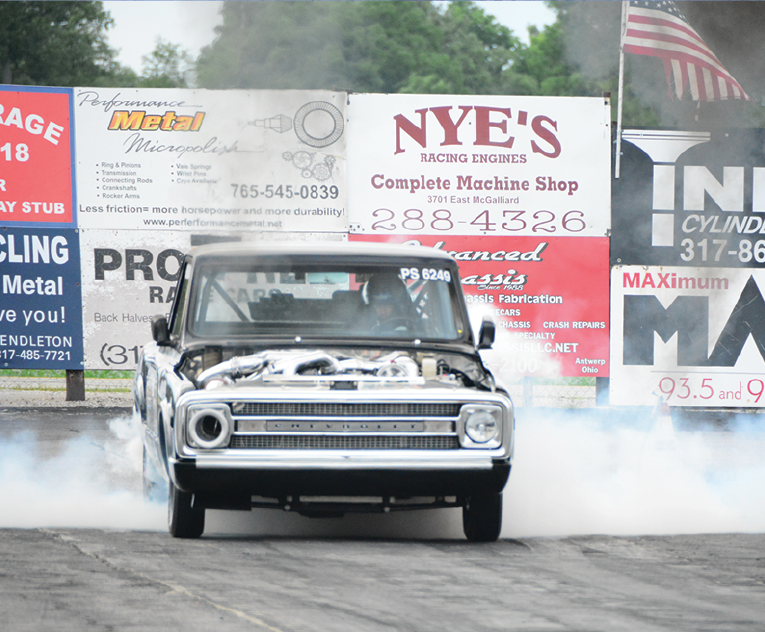
LGH
The Duramax LGH is a detuned version of the Duramax LML also introduced for the 2011 model year. It was designed specifically for chassis cab and box-delete vehicles (RPO ZW9), which are considered incomplete vehicles and therefore fall under a different Federal emissions standard category than pickups. The engine doesn’t require the same compliance as the standard LML.
The LGH (VIN code “L”) is used on 2010 interim and 2011 Chevrolet Express and GMC Savana vans and 2011 Chevrolet Silverado and GMC Sierra trucks with RPO ZW9 (chassis cabs or trucks with pickup box delete).
Beginning the 2011 model year, LGH applications included the Chevrolet Silverado 2500/3500 chassis cab, GMC Sierra 2500/3500 chassis cab, Chevrolet Express 3500/4500, and GMC Savana 3500/4500.
In chassis cab applications, the LGH is rated at 335 horsepower and 685 lb.-ft. of torque. For commercial Vans, the LGH is rated at 260 horsepower and 525 lb.-ft. Both power variations retain the LML’s B20 biodiesel compatibility. In addition to a unique engine calibration, the LGH features a different turbocharger, larger EGR cooler, and higher capacity SCR system. Beginning for the 2013 model year, all Sierra and Silverado chassis cab trucks received the more powerful LML instead of the LGH. The transition from the LGH to the LML for the 2013 model year in these applications was likely a strategic move in competing with other brand commercial vehicles.
L5P
The latest generation of Duramax power was introduced this year in the 2017 MY Silverado and Sierra HD pickups. Experts say that while the L5P (VIN Code “Y”) maintains the 6.6L displacement and bore and stroke of its predecessors, it is really more of a “clean sheet” design.
The L5P produces an SAE-certified 910 lb.-ft. of torque and 445 horsepower features an all-new, stronger cylinder block and rotating assembly, as well as a new, GM-developed control system. The engine’s production of low-rpm torque hasn’t changed: the L5P offers 90 percent of peak torque at a low 1,550 rpm and sustains it through 2,850 rpm, an attribute that contributes to the strong, confident pulling power at low speeds of the vehicles in which it powers.
The new L5P features a new camshaft profile and improved cylinder head design; a new electronically controlled, variable-vane turbocharger allows the engine to produce more power with lower exhaust emissions. The engine’s advanced variable-vane mechanism allows greater exhaust temperature capability, enabling the engine to achieve higher power at lower cylinder pressure.
Additionally, a new, patent-pending vehicle air intake system with functional hood scoop drives cool, dry air into the engine for sustained performance and cooler engine temperatures during difficult conditions, such as trailering (towing) on steep grades.
Cooler air helps the engine run better under load, especially in conditions where engine and transmission temperatures can rise quickly. This enbales the Duramax to maintain more power and vehicle speed when trailering in the toughest conditions.
As with previous versions, the new Duramax block features a strong cast-iron foundation known for its durability, with induction-hardened cylinder walls and five nodular iron main bearings. It retains the same 4.05-inch (103mm) and 3.89-inch (99mm) bore and stroke dimensions as the current engine, retaining the Duramax’s familiar 6.6L (403 cu.-in./6,599 cc) displacement.
A deep-skirt design and four-bolt, cross-bolted main caps help ensure the block’s strength and enable more accurate location of the rotating assembly. A die-cast aluminum lower crankcase also strengthens the engine block and serves as the lower engine cover, while reducing its overall weight.
The new engine block incorporates larger-diameter crankshaft connecting rod journals than the current engine, enabling the placement of a stronger crankshaft and increased bearing area to handle higher cylinder loads.
An enhanced oiling circuit, with higher flow capacity and a dedicated feed for the turbocharger, provides increased pressure at the turbo and faster oil delivery. Larger piston-cooling oil jets at the bottom of the cylinder bores spray up to twice the amount of engine oil into oil galleries under the crown of the pistons, contributing to lower engine temperature and greater durability.
A new, two-piece oil pan contributes to the new Duramax’s quieter operation. It consists of a laminated steel oil pan with an upper aluminum section. The aluminum section provides strength-enhancing rigidity for the engine, but a pan made entirely of aluminum would radiate more noise, so the laminated steel lower section is added to dampen noise and vibration.
There’s also an integrated oil cooler with 50 percent greater capacity than the current engine’s, ensuring more consistent temperatures at higher engine loads.
A tough, forged micro-alloy steel crankshaft anchors the new Duramax’s stronger rotating assembly. Cut-then-rolled journal fillets contribute to its durability by strengthening the junction where the journals — the round sections on which the bearings slide — meet the webs that separate the main and rod journals.
The connecting rods are stronger, too, and incorporate a new 45-degree split-angle design to allow the larger-diameter rod bearings to pass through the cylinder bores during engine assembly. They’re forged and sintered with a durable powdered metal alloy, with a fractured-cap design enabling more precise cap-to-rod fitment.
A new, stronger cast aluminum piston design tops off the rotating assembly. It features a taller crown area and a remelted combustion bowl rim for greater strength. Remelting is an additional manufacturing process for aluminum pistons in which the bowl rim area is reheated after casting and pre-machining, creating a much finer and more consistent metal grain structure that greatly enhances thermal fatigue properties.
Additionally, the Duramax’s pistons don’t use pin bushings, reducing reciprocating weight to help the engine rev quicker and respond faster to throttle changes
The redesigned engine retains the Duramax’s signature first-in-class aluminum cylinder head design, with six head bolts per cylinder and four valves per cylinder. The aluminum construction helps reduce the engine’s overall weight, while the six-bolt design provides exceptional head-clamping strength – a must in a high-compression, turbocharged application.
A new aluminum head casting uses a new double-layer water core design that separates and arranges water cores in layers to create a stiffer head structure with more precise coolant flow control. The heads’ airflow passages are also heavily revised to enhance airflow, contributing to the engine’s increased horsepower and torque.
The Duramax employs a common-rail direct injection fuel system with new high-capability solenoid-type injectors. High fuel pressure of 29,000 psi (2,000 bar) promotes excellent fuel atomization for a cleaner burn that promotes reduced particulate emissions. The new injectors also support up to seven fuel delivery events per combustion event, contributing to lower noise, greater efficiency, and lower emissions. Technology advancements enable less-complex solenoid injectors to deliver comparable performance to piezo-type injectors.
Turbocharging System
A new electronically controlled, variable-vane turbocharger advances the Duramax’s legacy of variable-geometry boosting. Compared to the current engine, the system produces higher maximum boost pressure – 28 psi – to help the engine make more power, and revisions to enhance the capability of the exhaust-brake system.
Along with a new camshaft profile and improved cylinder head design, the Duramax’s new variable-vane turbocharger enables the engine to deliver more power with lower exhaust emissions. It uses a more advanced variable vane mechanism, allowing a 104-degree F (40 C) increase in exhaust temperature capability. The self-contained mechanism decouples movement from the turbine housing, allowing operation at higher temperature. That enables the engine to achieve higher power at lower cylinder pressure. Additionally, it has lower internal leakage, allowing more exhaust energy to be captured during exhaust braking.
The integrated exhaust brake system makes trailering less stressful by creating additional backpressure in the exhaust, resulting in negative torque during deceleration and downhill driving, enhancing driver control and prolonging brake pad life.
A new venturi jet drain oil separator used with the Duramax 6.6L is the first of its type in the segment and is designed to ensure oil control in sustained full-load operation. The totally sealed system collects the fine mist of oil entrained in the blow-by gas and uses a small portion of the boosted air generated by the turbocharger to pump the collected oil back to the engine oil sump for re-use by the engine. GM says less-sophisticated systems are not able to return this oil during full-load operation, which can result in oil carryover into the cylinders during combustion.
The new Duramax also provides outstanding cold-weather performance, with microprocessor-controlled glow plugs capable of gas-engine-like starting performance in fewer than three seconds in temperatures as low as -20degrees F (-29 C), without a block heater. The system is enhanced with ceramic glow plugs and automatic temperature compensation – a first-in-class feature providing improved robustness and capability. The automatic temperature compensation assesses and adjusts the current to each glow plug for every use, providing optimal temperature for cold start performance and durability.
Unlike a gasoline engine, a diesel engine doesn’t necessarily require a throttle control system. The Duramax 6.6L employs an electronic throttle valve to regulate intake manifold pressure in order to increase exhaust gas recirculation (EGR) rates. It also contributes to smoother engine shutdown.
Additionally, a cooled exhaust gas recirculation (EGR) system enhances performance and helps reduce emissions by diverting some of the engine-out exhaust gas and mixing it back into the fresh intake air stream, which is fed through the cylinder head for combustion. This lowers combustion temperatures, improving emissions performance by reducing NOx formation.
The exhaust is cooled in a unique heat exchanger before it’s fed into the intake stream through a patented EGR mixing device, further improving emissions and performance capability. An integrated bypass allows non-cooled exhaust gas to be fed back into the system to help the engine more quickly achieve optimal operating temperature when cold.
The new Duramax 6.6L is capable of running on B20 biodiesel, a fuel composed of 20 percent biodiesel and 80 percent conventional diesel. B20 helps lower carbon dioxide emissions and lessens dependence on petroleum. It is a domestically produced, renewable fuel made primarily of plant matter – mostly soybean oil.
There are literally hundreds of products available to complement Duramax engines of every vintage. From internal components such as connecting rods, roller rocker systems, pistons, head gaskets, injectors and lift pumps to bolt-on accessories such as air intakes and filters, electronics and exhaust systems, your suppliers can hook you and your customers up with the goods.
GM may have stumbled out of the blocks but success in the diesel market is a marathon, not a s print – and the General is definitely still in the race. ν
Much thanks goes to Engine Builder contributors Roy Berndt, Ron Knoch and Bob McDonald for their invaluable research for this article. Other resources include General Motors, gmauthority.com, and duramaxhub.com. For more information on our coverage of diesel engines in general and the 6.6L Duramax in particular, visit www.enginebuildermag.com.

